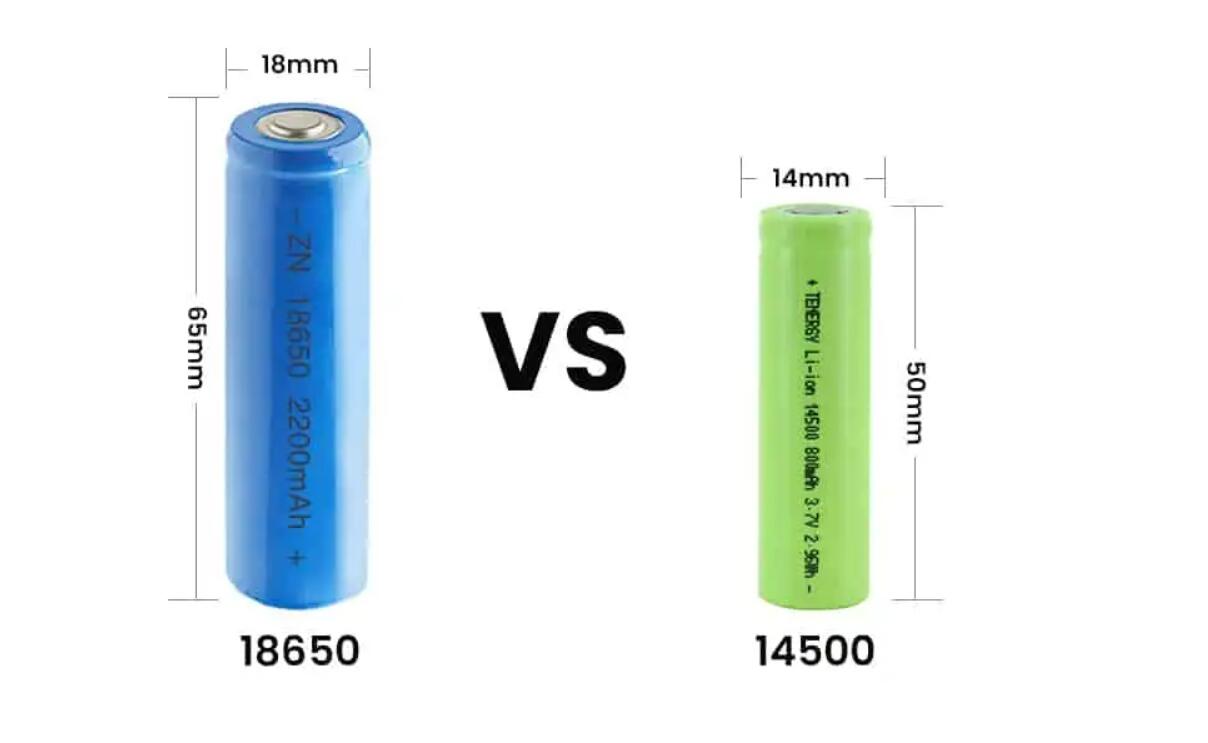Introduction:
In the realm of portable power, the choice of batteries can significantly impact the performance of your devices. Two common comparisons that often arise are between 14500 vs 8650 battery and the face-off of 14500 batteries against the familiar AA batteries. In this article, we delve into the characteristics, advantages, and applications of these batteries to help you make informed decisions based on your specific needs.
14500 vs. 18650 Batteries:
- Size and Form Factor: The numerical nomenclature of these batteries provides a clue about their size. A 14500 battery is similar in diameter to an AA battery but shorter, while an 18650 battery is larger than both an AA and a 14500. The form factor can impact the compatibility of the batteries with various devices.
- Capacity: 18650 batteries generally boast a higher capacity compared to 14500 batteries. This means they can store more energy, making them suitable for high-drain devices such as high-powered flashlights, vaping devices, and certain electronics.
- Voltage: Both 14500 and 18650 batteries are lithium-ion cells, and their nominal voltage is 3.7 volts. However, the key difference lies in their chemistry and capacity, affecting how long they can sustain a particular voltage during use.
- Applications: 14500 batteries find their niche in smaller electronic devices where space is a constraint. Common applications include small flashlights, certain cameras, and some electronic toys. On the other hand, 18650 batteries are prevalent in larger devices such as laptops, power tools, and high-performance flashlights.
14500 Battery vs. AA Battery:
- Similar Size, Different Chemistry: Both the 14500 and AA batteries share a similar size, but they differ in chemistry. The 14500 is a lithium-ion battery, while the AA battery can be alkaline, nickel-metal hydride (NiMH), or even lithium.
- Voltage and Capacity: The 14500, being a lithium-ion battery, typically provides a higher voltage (3.7V) than the standard 1.5V of an AA alkaline battery. Additionally, 14500 batteries often have higher capacity, making them suitable for devices that demand more power over time.
- Rechargeability: The 14500 lithium-ion battery is rechargeable, allowing for multiple uses and reducing environmental impact. Most AA batteries are available in both disposable and rechargeable variants, with NiMH rechargeable AA batteries being a common choice.
- Performance in High-Drain Devices: In high-drain devices like digital cameras or powerful flashlights, the 14500 lithium-ion battery typically outperforms the AA alkaline battery. The higher voltage and capacity contribute to sustained and efficient power delivery.
Conclusion:
Choosing between 14500 and 18650 batteries or deciding on 14500 vs. AA batteries ultimately depends on your specific requirements and the devices you intend to power. If size and compactness are critical, 14500 batteries may be the preferred choice for smaller electronics. However, if you require higher capacity and power for larger devices, the 18650 battery might be more suitable.
Similarly, in the duel between 14500 vs AA battery, the choice hinges on factors such as voltage, capacity, and the convenience of rechargeability. Understanding the distinct characteristics of each battery type empowers you to make decisions that align with the power needs of your devices, ensuring efficient and reliable performance in various applications.













